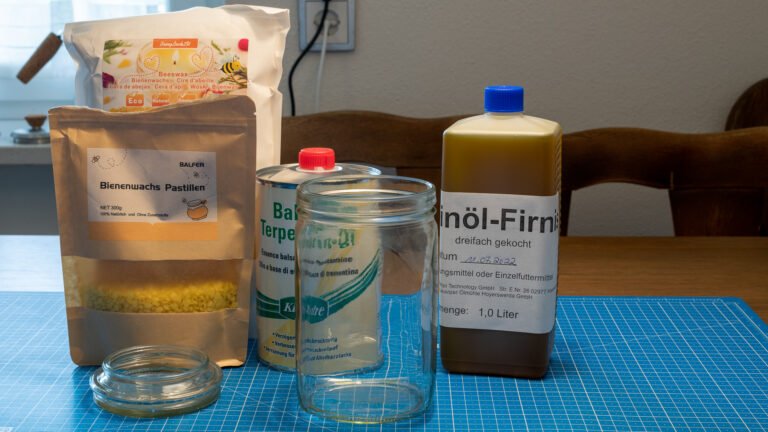Waterproofing
Various materials have been waterproofed over the years across the globe and while there are some incredible modern high-tech impregnation products, I have a couple of times that I’d like to apply the old-school natural compounds to. I know that the waterproofing won’t last as long or work as well as something like a hydrophobic spray but the look and feel of a waxed surface can’t be replicated any other way.
Recipe
There are several variations of components and mix-ratios out there, but I’m sticking to an old and proven one:
2 units beeswax (by weight)
1 unit boiled linseed oil
1 unit boiled turpentine
Linseed oil is a drying oil, so it will oxidize and stiffen over time. The turpentine is added to dilute the linseed oil and slow down the curing process to let it penetrate the item to be waterproofed. Beeswax is the main waterproofing agent. Care needs to be taken with the linseed oil, as it generates heat when curing and there are many known cases of linseed oil drenched rags catching fire when crushed together and put aside. The correct method is to spread out rags on a non-combustible surface until dry. I’ll be using a brush to apply my solution so am not particularly worried about spontaneous combustion, but I’ll still put that brush outside to dry.
Heating and mixing
I’m using a double-boiler to heat my solution. That just means that I’ve got a pot filled with water that is placed on the heat source and then my mixture is inside another pot (or a mason jar, in this case) that is heated indirectly. This is to avoid overheating and minimizes the danger of a fire as all of the components have very low flash-points.
After waiting a long time for my improvised double-boiler (with an inverted saucer between the two pots to prevent overheating)to heat up to the correct temperature, I opted to switch approaches. Beeswax will melt at around 65°C but can burn (turn brownish) over 80°C so I got out my trusty sous-vide circulator and set it to 70°C. This not only let the water heat up much quicker and start the wax melting in the inner pot, but also prevents any possible burning as well.
Application
While it was still hot, I applied the mixture to 2 small cotton pouches, a cotton carry bag from a supermarket and the jute canvas from a coffee bag. I used a brush to get the liquid applied in a thicker layer, after it cools the application needs to be done with a cloth. The items got a treated with a hairdryer to melt the surface wax into the material and then went outside to cure for at least a day. Considering the amount of volatile compounds in the mix, they might have to stay outside even longer than that.


